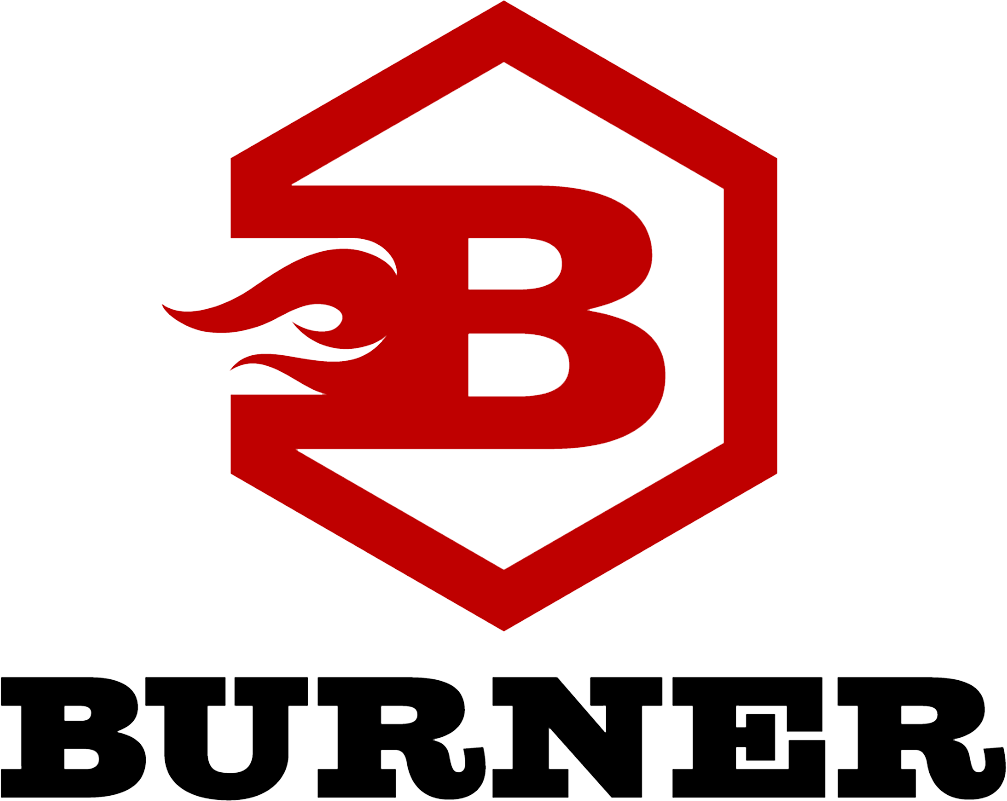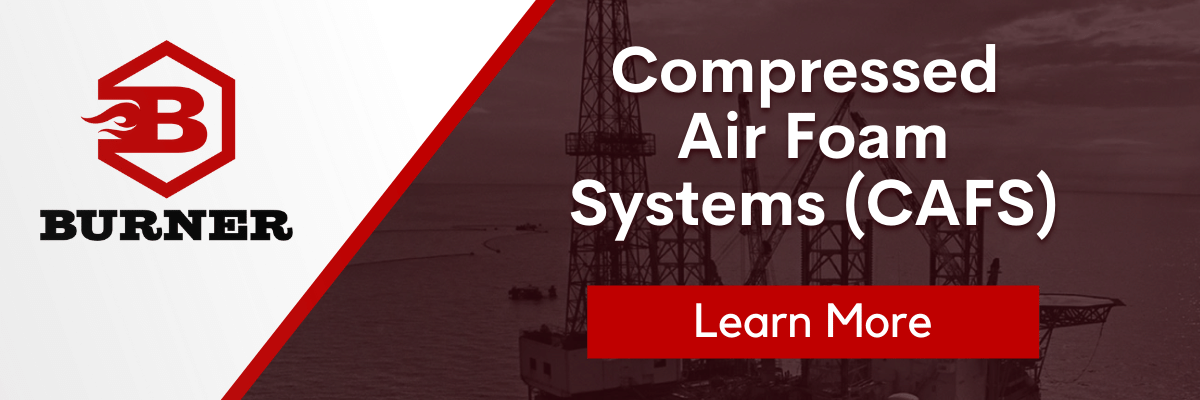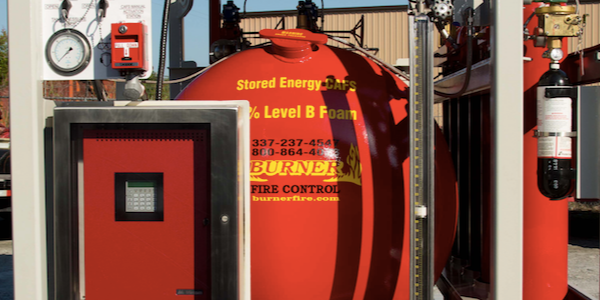
The Burner Fire Control RigSafe Heliport Unit is engineered on our Compressed Air Foam (CAF) platform to provide a self-contained & mobile system for advanced protection for helicopter landing areas on any facility.
Background
Fire protection and safety for helicopter landing areas has historically had a wide range of acceptability based on location and region. The extent and amount of fire protection installed on helidecks has been determined by the Authority Having Jurisdiction (AHJ), national and international codes. As there are now multiple organizations participating on reaching further global standardization, the following sheet will discuss many of the applicable fire codes as well as how Burner Fire Control CAF Equipment can help meet specified requirements while adding flexibility and redundancy.
What Are CAFS?
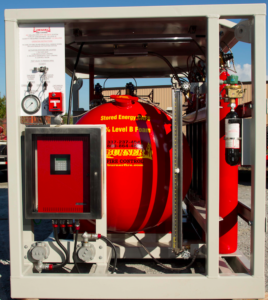
Compressed Air Foam Systems or CAFS are fire suppression units which have the ability to inject compressed air into a foam solution to generate a powerful fire suppression and attacking foam. This type of foam has a tighter and more dense bubble structure than water with standard foam solutions. The condensed bubble structure allows the foam to adhere to vertical and horizontal surfaces as well as penetrate deeper into the fire before breakdown of the bubbles occurs. This deeper penetration allows the latent water to be more effective.
There has been a large uptick in research focused on the performance of CAF systems and their ability to more effectively suppress fires in a variety of environments. The use of CAFS as a first-line emergency response agent is being adopted by organizations globally. Burner Fire Control has developed and assembled the most extensive line of systems compared to any other manufacturer. The effectiveness of Burner Fire Control’s CAFS is proven by the growing customer base spanning North America, Canada, South America, EMEA, and APAC. Our hand-truck, cart and skid mounted hose reel foam systems are self contained with stored energy, eliminating the need for an outside agent or propulsion source.
Stored energy CAFS refers to the method used to dispense the compressed air foam. Burner Fire Control systems utilize compressed air or nitrogen rather than pressurized air generated by an air compressor. This makes these systems “self contained”, eliminating the need for external sources to actuate the system. In addition, the units can be quickly recharged to respond to additional hazards. Units are designed and constructed to the same standards as our full line of dry chemical, powder, and foam equipment to make them withstand the harshest environmental conditions.
Applicable Fire Codes
Depending on the circumstances of your application, as well as the region in which your heliport is located, protection of heliports may be governed by any of a number of codes. The National Fire Protection Association (NFPA) created NFPA 418 the Standard for Heliports. However, the United States Coast Guard (USCG) Department of Homeland Security (DHS) created Title 46 Part 108 that includes section 486 Fire protection for Helicopter Facilities. The Civil Aviation Authority (CAA) uses CAP 437 the Standard for Offshore Helicopter Landing Areas which contains chapter 5 Helideck Rescue and Fire Fighting Facilities. The Federal Aviation Authority (FAA) relies on both NFPA 418 and CAP 437 while the International Civil Aviation Organization created the Heliport Manual Doc 9261 – AN/903. This ICAO manual contains chapter 6 Rescue and FireFighting. Finally the International Maritime Organization (IMO) developed the code for The construction and equipment of mobile offshore drilling units, which includes Chapter 9 Fire Safety. Regardless of the location and applicable code, these standards all rely heavily on the use of foam as the primary means of suppression. This is due to the expected hazard present, a fuel fire. The ICAO standard recognizes that foam agents, specifically Level B performance foams as defined by paragraph 8.1.5 in the airport Services Manual (Doc 9137), part I – Rescue and Fire Fighting, are primary agents. While Dry Powder, Halons, and CO2 are considered complementary agents. Cap 437 Section 2.8 states that whenever non-aspirated foam equipment is selected during design, additional equipment capable of producing aspirated foam for post-fire security/control should be provided. Even if not required, it is advantageous to have a CAFS as the fire is likely to be a 3-dimensional pool fire and CAFS have proven to be more effective against this fire type than the conventional foam systems.
System Design
The previously identified codes base the design criteria for foam systems on the expected size of the helicopter that will be using the heliport. As an example, the IMO standard section 9.11.2 states that on any helicopter deck there should be provided and stored near the means of access to that deck a suitable foam application system consisting of monitors or foam making branch pipes capable of delivering foam solution to all parts of the helicopter deck at a rate of not less than 6 LPM (1.6 GPM) for at least 5 minutes for each square meter of the area contained within a circle of diameter “D”, where “D” is the distance in meters across the main rotor and tail rotor in the fore-and-aft line of a helicopter. The ICAO standard breaks the heliport into fire fighting categories based on helicopter size as seen in the following table.
Category |
Helicopter Overall Length |
|
H1 |
Up to, but not including, 15m |
|
H2 |
From 15m, up to, but not including, 24m |
|
H3 |
From 24m, up to, but not including, 35m |
NFPA 418 – Section 5.7 states that a foam fire-extinguishing system with either a fixed discharge outlet(s) in accordance with 5.7.3 or a hose line(s) in accordance with 5.7.4 shall be assigned and installed to protect the rooftop landing pad, unless otherwise permitted by the following: a foam fire extinguishing system shall not be required for heliports located on open parking structures or buildings that are not normally occupied. For H-1 heliports, two portable foam extinguishers, each having a rating of 20-A:160B, shall be permitted to be used to satisfy the requirement of section 5.7.ICAO Section 6.83 states that it is considered essential that fire fighting agents are able to be applied to any part of an elevated heliport irrespective of wind direction. The CAA and FAA specifically calls out the need for multiple redundant equipment as they state a helicopter accident, which results in a full spillage with wreckage and or fire and smoke, has the capability to render some of the equipment inventory unusable or preclude the use of some passenger escape routes. CAP437, similar to ICAO, states that the operational objective should be to ensure that the system is able to control a helideck fire associated with a crashed helicopter during a range of weather conditions. Section 2.2 states that if a fixed system is in place, consideration should be given to the loss of downwind foam monitors either due to limiting weather conditions or a crash situation. ICAO also states that areas of of a helideck and its appendages that may, for any reason, be otherwise inaccessible to fixed monitor systems, it is necessary to provide additional hand-controlled foam branch pipes as described in paragraph 2.9. The minimum capacity of the foam production system will depend on the D-value of the helideck, the foam application rate, discharge rates of the installed equipment and the expected duration of the application. USCG part 108 section 487 (d) states that each system must have at least one hose at each of the two access routes. Each hose must must be reel mounted and long enough to cover any point on the helicopter deck. Each hose that discharges foam must have a nozzle that has foam stream, foam spray, and off position. The use of Burner Fire Control CAF systems is advantageous as it allows for the placement of multiple units around the heliport providing the required discharge regardless of weather and any single monitor being involved in the accident while providing flexibility in the application and timing of the delivery to compensate for damage to fixed systems and provide protection to egress routes from the chaotic and unforeseeable consequences of a helicopter accident.
NFPA 418 Section 5.7.4 goes on to state that the area or application of foam discharge for hose line systems shall be the practical critical fire area for the category of the helicopter landing facility in accordance with table 5.7.4 for a duration of 2 minutes.
Table 5.7.4 Practical Critical Fire Areas for Hose Line Systems Only
Heliport Category |
Helicopter Overall Length |
Practical Critical Fire Area (ft2) |
Practical Critical Fire Area (m2) |
|
H-1 |
Less than 50 ft (15.2m) |
375 |
34.8 |
|
H-2 |
50 ft (15.2m) up to but not including 80ft (24.4m) |
840 |
78.0 |
|
H-3 |
80ft (24.4m) up to but not including 120ft (36.6m) |
1440 |
133.8 |
NFPA 418 chapter 9 Portable Fire Extinguishers section 9.1.1 states that at least one portable fire extinguisher as specified in Table 9.1.1 shall be provided for each takeoff and landing area, parking area, and fuel storage area, unless otherwise permitted by 9.1.2
Heliport Category |
Helicopter Overall Length |
Minimum Rating |
|
H-1 |
Less than 50ft (15.2m) |
4A:80-B |
|
H-2 |
50ft (15.2m) up to but not including 80ft (24.4m) |
10-A:120-B |
|
H-3 |
80ft (24.4m) up to but not including 120ft (36.6m) |
30-A:240-B |
Terms of Interest:
D-circle means a circle, usually hypothetical unless the helideck itself is circular, the diameter of which is the D-value of the largest helicopter the helideck is intended to serve.
D-value means the largest overall dimension of the helicopter when rotors are turning. This dimension will normally be measured from the most forward position of the main rotor tip path plane to the most rearward position of the tail rotor tip path plane.
Reference:
CAAP 92-4(0): Guidelines for the development and operation of off-shore helicopter landing sites,
including vessels, October 2012
The above referenced information can be found in the 2019 article title "Helipads in the 21st Century" published in AIRMED&RESCUE
Further information about Compressed Air Foam Systems located here.
About Burner Fire Control
 Burner Fire Control delivers complete fire protection for onshore and offshore operations as well as safety, construction, fabrication, and maintenance services. Each person on our technical management team has an average of 25 years in the industrial & marine fire safety field experience.
Burner Fire Control delivers complete fire protection for onshore and offshore operations as well as safety, construction, fabrication, and maintenance services. Each person on our technical management team has an average of 25 years in the industrial & marine fire safety field experience.
These skills plus the industry’s most respected certifications, our growing list of client credentials, and expertise in both the offshore and onshore fields make us one of the most unique privately-held organizations in the oilfield services sector.
Related Posts
Compressed Air Foam CAFS Helideck Fire Fighting Unit
Burner Fire Control has completed design, manufacturing, and testing of its Self-Contained 450...
CAFS Compressed Air Foam Helideck Fire Fighting Unit Official Demo
The Compressed Air Foam CAFS Helideck Fire Fighting Unit completes testing to achieve client...
CAFS Compressed Air Foam System Monitor Test
Fire Fighting for Helicopter Landing Areas
The below video illustrates some of the Testing of Foam...
